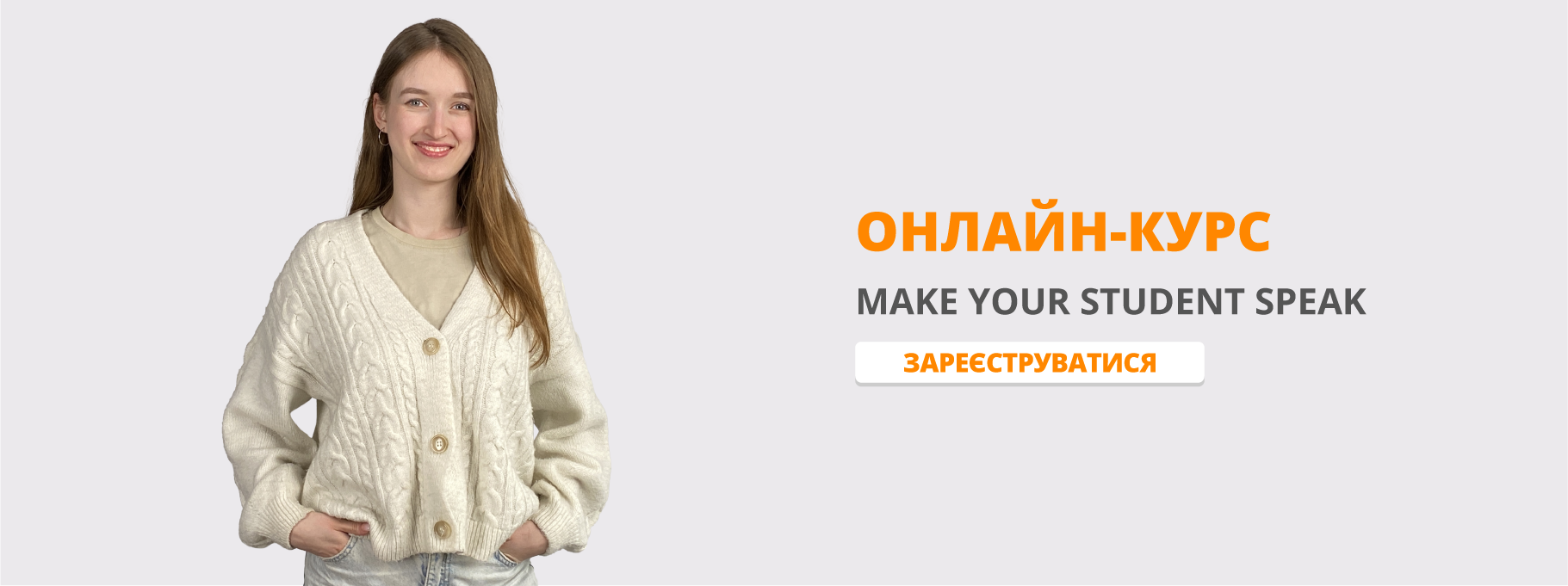IMAGINATION WORKOUT. Інновації як засіб прогресивних змін в освіті: теорія і практика
Напрям: Інновації як засіб прогресивних змін в освіті: теорія і практика
Сосновська Марія Валеріївна
вчитель англійської мови Одеської гімназії 5
IMAGINATION WORKOUT
“Imagination is more important than knowledge. For knowledge is limited to all we now know and understand, while imagination embraces the entire world, and all there ever will be to know and understand.” Albert Einstein
A crucial aspect of creative thinking is the capacity to imagine. As author and educational advisor Sir Ken Robinson once said: “Imagination is the source of every form of human achievement.”
Without imagination, our ability to blend ideas, to see things not as they are but as they might be, is greatly hindered. If we cannot imagine new possibilities, our ability to think creatively is limited. How can we think of ways that generate novel and worthwhile ideas if we keep coming back to existing and proven ideas?
A vivid imagination is more than dreaming up stories about dinosaurs and pirates. It is the origin of creativity and innovation, expressed in everything from technology and science to arts and literature.
Working on powers of imagination will help our students think outside the box – a useful skill at both school and work. Though some people are more naturally imaginative than others, there are ways we as teachers can use to cultivate creative juices.
Imagination has both driven learning and been the result of it. By developing imagination, we expand the mind to receive possibilities in learning. On the other hand, learning causes us to both dream and imagine when we seek to understand more. In the classroom, this is exactly what happens when teaching with imagination becomes the instructional focus. Suffice it to say that imagination and learning go hand in hand.
As younger children, play and imagination are at the core of learning. Nevertheless, the truth is that as we get older we imagine less and less. Since we know a creative imagination is more important to learning today than ever, it's time to reclaim it. How do we make developing imagination a worthwhile goal for all grade levels?
- Give them more control: "Allowing students more power over their work can activate their curiosity. They start to crack open when they feel like they’re in charge." Here are some ways to help learners overcome barriers to learning, including "stand aside and guide. Students respond very well to teachers who listen to them. [3, p. 27]. That is, by the way, one of the main principals any IKEA store works on. A shop assistant there never will come to you with the wide-spread question “Can I help you?” IKEA gives its customers an opportunity to dream inside its interiors, imagine what your life will be like when you buy that lamp you are looking at. IKEA gives its customers freedom to dream, should we implement the same in our classrooms?
- Tell collaborative stories: Collaborative stories or "story trains" are an essential critical thinking and attention exercise. Many other imaginative activities will work the same way. They also exercise active listening, collaboration, and language skills. For example, why not use amazing cartoons by Bidstrup? Students can make up a story based on these illustrations, which can be reordered or used to practice different types of narratives. Cognitive research suggests that storytelling is popular across all cultures because it provides a context or framework in which we can more easily interpret human experience. [1, p. 145]. Educational research has also in recent years stressed the importance of what is called ‘narrative intelligence’ for both learner and teacher. Narrative intelligence (NI) at its simplest level is the ability to tell and understand a story. In certain cultures, particularly those that have used storytelling as a way to affirm their own culture when faced with domination by another (external) culture, narrative intelligence is extremely high. In western societies, which have very often been the dominant external culture, its importance has diminished and its benefits have to a large extent been ignored in mainstream education. [1, p.147]
- Introduce real-life experience when possible: Often teachers are expected to put up a front, and this can create a barrier to developing imagination. Choose some stories to tell about yourself to show students that behind the mask of professionalism are someone just as human as they are.
- Try doodling: An old practice for unlocking imagination is starting to get respect again with good reason. In the book The Doodle Revolution, author Sunni Brown talks about doodling as something to embrace in the classroom. It's a way to express thought, retain knowledge by visual association, and exercise creativity.
- Imagine a “creative council” in the classroom. For example, say they develop an imaginary council of which Abraham Lincoln or Maya Angelou are the primary mediator. How would these historical leaders respond to problems or issues brought before the council? What would they encourage others to do in finding a solution? In this case a generator of the questions can be used. It can be a hand-made spinner [2, p.125] or an online application.
In conclusion, I would like to say that fueling our students’ imagination doesn’t require anything more than the most basic tools. We often think children need more than they actually do to develop their mental abilities including imagination – what they really need is the time, the space and the encouragement to do it.
References
- Kieran Donaghy, The Image in English Language Teaching – ELT Council Malta, 2000 – p. 147
- Miles Craven Quizzes, Questionnaires and Puzzles Cambridge University Press, 2005 – p. 125
- Jeremy Harmer, Pearson Education Limited, 2007 – p.27


про публікацію авторської розробки
Додати розробку
